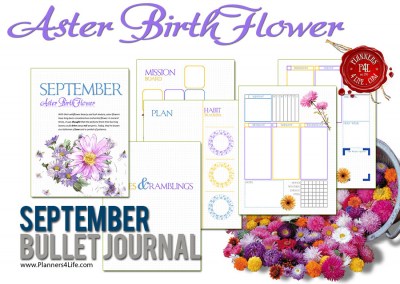September is the ninth month of the year in the Julian and Gregorian calendars, the third of four months to have a length of 30 days, and the fourth of five months to have a length of less than 31 days. In the Northern Hemisphere September is the seasonal equivalent of March in the Southern Hemisphere.
In the Northern hemisphere, the beginning of the meteorological autumn is on 1 September. In the Southern hemisphere, the beginning of the meteorological spring is on 1 September.[1]
September marks the beginning of the ecclesiastical year in the Eastern Orthodox Church. It is the start of the academic year in many countries, in which children go back to school after the summer break, sometimes on the first day of the month.
September (from Latin septem, "seven") was originally the seventh of ten months on the oldest known Roman calendar, with March (Latin Martius) the first month of the year until perhaps as late as 153 BC.[2] After the calendar reform that added January and February to the beginning of the year, September became the ninth month, but retained its name. It had 29 days until the Julian reform, which added a day.
Ancient Roman observances for September include Ludi Romani, originally celebrated from September 12 to September 14, later extended to September 5 to September 19. In the 1st century BC, an extra day was added in honor of the deified Julius Caesar on 4 September. Epulum Jovis was held on September 13. Ludi Triumphales was held from September 18–22. The Septimontium was celebrated in September, and on December 11 on later calendars. These dates do not correspond to the modern Gregorian calendar. In 1752, the British Empire adopted the Gregorian calendar. In the British Empire that year, September 2 was immediately followed by September 14.
September was called "harvest month" in Charlemagne's calendar.[3] September corresponds partly to the Fructidor and partly to the Vendémiaire of the first French republic.[3] On Usenet, it is said that September 1993 (Eternal September) never ended. September is called Herbstmonat, harvest month, in Switzerland.[3] The Anglo-Saxons called the month Gerstmonath, barley month, that crop being then usually harvested.[3]
September in Astronomy and Astrology
Meteor showers that occur in September include the Aurigids, the Delta Aurigids which occur from mid-September to early October, the Southern Taurids, which occur from September 10 to November 20, and the Andromedids which occur from September 25 – December 25.
The September equinox takes place in this month, and certain observances are organized around it. It is the Autumn equinox in the Northern Hemisphere, and the Vernal Equinox in the Southern Hemisphere. The dates can vary from 21 September to 24 September (in UTC).
September is mostly in the sixth month of the astrological calendar (and the first part of the seventh), which begins at the end of March/Mars/Aries.
September symbols
September's birthstone is the sapphire.
The birth flowers for September are the forget-me-not, morning glory and aster.[4][5]
The zodiac signs for the month of September are Virgo and Libra whose end and start are related to equinox date (usually 22 or 23 September).
09 - SEPTEMBER
SEPTEMBER IS Classical Music Month
This Single Month Bullet Journal observes Classical Music ...
SEPTEMBER IS Fall Hat Month in B&W
This Single Month Bullet Journal observes Fall Hat Month in ...
SEPTEMBER IS Fall Hat Month in Color
This Single Month Bullet Journal observes Fall Hat Month in ...






